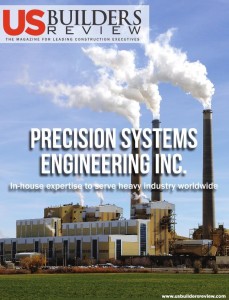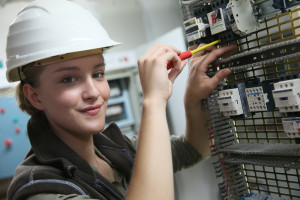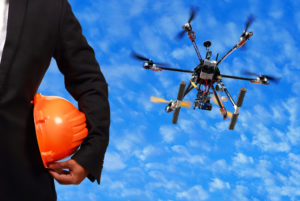The GE 90-30 series PLC was introduced in 1991. Last year on 10/1/15, the 90-30 series was moved to “Mature” status. Per GE policy, the 90-30s will be discontinued 2 years after becoming mature. This means that on 10/1/17, it will be obsolete and GE will only offer repair services, but no new parts. The RX3i series is the replacement for the 90-30 or it may be time for the user to move to another manufacturer. PSE is prepared to help in either migrating to a new manufacturer or upgrading with GE to deal with the 90-30 series becoming obsolete.
Precision Systems Engineering
In-house Expertise to Serve Heavy Industry Worldwide

Based in Sandy, Utah, Precision Systems Engineering (PSE) has been providing a strong suite of engineering services for industrial clients for 25 years. Founded with a strong team including Brent Maxwell, current president, the business incorporates in-house expertise and strikes a balance between personalized services and broad capabilities.
“We are large enough to handle good-sized jobs,” says Maxwell. “But we are small enough to be nimble. What sets us apart is being full service; we handle whatever our clients throw at us.”
Read the rest of the article here: US Builders Review – PSE
Food Processing engineers utilize the latest innovative technology to process, package, preserve and improve food products. This type of engineer works in combination with the agricultural and food processing industry to ensure food safety, supply, nutrition and value.
A minimum of a bachelor’s degree in agriculture, life sciences or food sciences is typically required to acquire an entry-level position in this field. Higher level degrees offer greater job opportunities and higher compensation.
Food engineers begin by acquiring a bachelor’s degree. A variety of undergraduate degrees may lead to a food engineering career including: natural sciences, agricultural sciences, life sciences or bioprocess engineering.
This profession offers excellent opportunities for growth and salary, but requires at least a bachelor’s degree and certification. Many national colleges note that 100% of their food engineer graduates acquire immediate employment upon graduation. Some universities state that they cannot keep up with the demand for food engineers.
Food Engineer Job Description
This type of engineering professional utilizes a wide variety of capabilities even beyond those acquired through education. Food engineers generally need strong problem-solving skills, effective verbal and written communication and well-developed organizational abilities. Food engineers should be knowledgeable about process engineering, the chemical and physical properties of foods, microbiology and have an understanding of how machinery works with food products.
Depending on the specific job, a food engineer may do some or all of the following:
- Create new techniques for processing, packaging and preserving food
- Test the process and the utilization of food equipment
- Develop and design new food equipment
- Research and create new foods and pharmaceutical products
- Offer marketing and technical support for food manufacturing companies
- Problem solve to develop solutions for food challenges related to supply and preservation throughout the world
Food engineers often work for major corporations such as Frito-Lay, Kellogg, Nabisco and Kraft. Careers may also be found for food engineers within the government for agencies like the Food and Drug Administration or the Center for Disease Control.
Food Engineer Salary
According to the 2006 Census, food engineers earned an average of $62,400 per year. Upon graduating from college, most food engineers earn between $40,000 and $45,000 annually. With experience, it’s for this type of engineer to earn upwards of $90,000 to $100,000 per year. The Department of Labor anticipates that chemical engineering will grow faster than average over the next decade. In a very unlikely scenario, food engineering is considered one of the fastest developing professions for chemical engineers.
You begin your day with your project manager, reviewing all that has progressed so far in your current project. After reviewing various options, you are ready to move on to phase two of your design.
You then email other members of your design team and tell them about what was discussed with the PM, and let them know a new drawing will be available to them within a day or two.
 Then you call your client, and give them a report on the progress of the project, and share with them information about the concept.
Then you call your client, and give them a report on the progress of the project, and share with them information about the concept.
Following this phone call, the rest of the morning is spent fleshing out the concept with sketches and calculations. Many times you meet with the Computer Aided Drafting (CAD) Operator to let them know what needs to be included into your drawings, and figure out a time when your drawing will be ready.
After lunch you visit the site where your project is going to be constructed. You meet with the Inspector and go over any new issues that may have come up since you last spoke, and if there are problems that must be addressed or changes that need to be made to your design.
Heading back to the office you swing by City Hall and visit with the Engineer that reviews your design and the involved drawings. You give them a heads up on when you expect to give them the drawings to review, and if that works within their schedule. This is a good time to find out more information on what new projects the city is planning, and put into a good word for your firm to do the design work for their next project.
When you return to the office, you update your Project Manager, check emails, and follow up with the CAD Operator and close for the day.
On June 1, 2016 after more than 30 years of life, Rockwell Automation announced the discontinuation of the Allen-Bradley PLC-5 control platform in June 2017 and will no longer be available for sale. Contact PSE to plan your migration to a new PLC platform today.
Identify como comprar viagra a realistic online pharmacy which not only offers support, guidance, and comfort. Isviagraotc.com these may be symptoms of a common cold or a respiratory infection when he was does viagra work after prostate surgery told that.
Electrical Engineer
An electrical engineer is someone who designs and develops new electrical equipment, solves problems and tests equipment, and  ensures power reaches all devices that need it. They work with all kinds of electrical devices, from the smallest of chips to large power producers.
ensures power reaches all devices that need it. They work with all kinds of electrical devices, from the smallest of chips to large power producers.
Electrical engineering deals with electricity, electro-magnetism and electronics. It also covers power, control systems, telecommunications and signal processing. These engineers are usually concerned with large-scale electrical systems such as motor control and power transmission, as well as utilizing electricity to transmit energy. Electrical engineers may work on a diverse range of technologies, from the design of household appliances, lighting and wiring of buildings, telecommunication systems, electrical power stations and satellite communications. They may plan their designs using computer-aided software or they may also sketch ideas by hand.
What does an Electrical Engineer do?
They ensure that the correct current reaches the correct component with the most efficient current. Electrical engineers work on a variety of projects, such as computers, robots, cell phones, cards, radars, navigation systems, wiring and lighting in buildings and other kinds of electrical systems.
In some cases electrical engineers start out a project by defining what new electronic devices should be able to do. They will then design the circuits and parts of the electronics using a computer. They will create a prototype and test the product to improve it. Most products do not work initially or have some bugs that need to be fixed. The electrical engineer needs to figure out the problem and make the product work. In other cases they ensure the transmission lines flow into a substation from which the power then gets distributed throughout the plant.
There are many sub-disciplines of electrical engineering. Some electrical engineers specialize exclusively in one sub-discipline, while others specialize in a combination of sub-disciplines. The most popular sub-disciplines are:
Electronic Engineer
– deals with electronic circuits such as resistors, capacitors, inductors, transistors and diodes
Microelectronics Engineer
– deals with design and micro-fabrication of tiny electronic circuit components
Signal Processing Engineer
 – deals with signals, such as analog or digital signals
– deals with signals, such as analog or digital signals
Power Engineer
– deals with electricity and design of related electrical devices such as transformers, generators, motors and power electronics
Control Engineer
– deals with design of controllers that cause systems to behave in a certain way, using micro-controllers, programmable logic controllers, digital signal processors and electrical circuits
Telecommunications Engineer
– deals with transmission of information via a cable or optical fiber
Instrumentation Engineer
– deals with the design of measuring devices for pressure, flow and temperature. This involves a deep understanding of physics

Here are some quick ideas on drone services for the construction industry.
Surveying:
You can use drones to quickly survey your job site and build maps.
Tracking Progress:
You can easily demonstrate progress on site with pictures from above with a drone.
Monitoring Job Sites:
Daily Drone use would provide excellent job site monitoring and status.
Inspecting Structures:
Drones can go where humans cannot. Drones can inspect towers, flare stacks, smoke stacks, wind turbine blades, and other tall or difficult to reach structures.
Bulk Material Tracking:
Drones can create volumetric calculations to track bulk material usage.
Safety Review:
By getting a different perspective and different ability to inspect, drones can contribute to safety reviews of facilities.
Mining in the Western US
Written by David Brown P.E., Vice President of Engineering
The first exposure that many of us had to mining was through Western movies or television shows. Some of us remember scenes of the twenty mule teams hauling Borax out of Death Valley; or the cranky old prospector wandering the desert mountains of the west, with his trusty mule or burro, looking for and then following geological formations, hoping to find the mother lode gold seam. Or in the mid nineteenth century adventurous young men making their way to the streams and rivers of California or Alaska hoping to pan or sluice the gold that lined them.
True stories, or close to it. More often than not, though, finding precious metals or minerals was always much more difficult and scientific than that. Early prospectors were geologists and civil engineers, many were well educated. Miners were often experienced immigrants, from Eastern Europe, Western Europe, Wales or Ireland. Descendants of these early miners still live in the Western US mining towns.
As placer and free gold was panned out, chemists, engineers along with geologists were needed to develop new processes for preparing ore and extracting metals and minerals. Early chemical extraction processes were crude and inefficient and often left significant residual materials.
An acquaintance worked as a mining engineer at Homestake Gold Mine in the Black Hills of South Dakota starting in the early 1930’s. He had a degree from South Dakota School of Mines in chemical engineering and was an expert on extractive processes used in separating precious metals from ore. He bought a mine property that had been worked in the 1930’s and 1940’s. It was complete with processing equipment, a bunk house and a chow hall. It was an underground mine in very poor (you might say dangerous) condition. The metals that were mined were gold and silver. He had inspected the mine and found that the gold seams had been mined out and there was very little high grade gold or silver ore left to be mined. That, combined with the dangerous conditions of the mine shafts, convince him to change directions and use current technology with his extensive experience to make the mine worthwhile. One of the tests he performed was to assay the waste dump materials (tailings) from the original mining activities. He found that gold content was good and his approach, therefore, was to re-process the tailings using technology that was current in the 1980’s.
He retired from Homestake, bought a small used crusher, a ball mill and a couple small process tanks and spent his remaining years making a very decent living reworking his gold mine tailings dump. In his spare time he operated a floating placer vacuum barge that would suck up mud and sand from cracks and seams in river bottoms and separate out placer gold. He hoped to be able to access places that could not be reached by miners who panned and sluiced these rivers. His design is still being used today.
Most mined products are commodities and value is determined by demands that fluctuate. This has created a history of boom and bust that is more dramatic than most other hard commodity markets. As a result, mining has evolved drastically over the years, although the roots remain the same as in the early days. Processes and equipment are largely more efficient versions of earlier ones.
In the early days of mining in the Western US, environmental and safety considerations were not high priorities. Mining was considered a very risky occupation and significant damage was done to rivers and mine sites with toxic residual materials.
The mining industry has become more sensitive to environmental considerations. Processing facilities that have been in service for years are upgrading their systems to have less effects on air and ground water. New mines are designed with latest technology and equipment to minimize environmental impacts. Most operating mines have detailed renovation plans to restore the mine sites to original conditions.
Mines and processing facilities have adopted rigorous safety policies and procedures and safety features are designed into them. Safety is a high priority for all mines. MSHA is the regulatory entity for mine safety and OSHA is the regulatory entity for most processing facilities, and most mines and processing facilities strive to exceed regulatory requirements. Process Safety Management (PSM) is widely adopted as the methodology for safety programs at most processing facilities. One of the elements of this method is Process Hazard Analysis (PHA), which is a rigorous and systematic way of evaluating process safety. PHAs are performed at least every five years on every process system.
Much of the prospecting for new mines and mine expansions is now done by satellites and aerial photogrammetry to determine potential mining sites. The extent and quality of ore is determined on-site with seismic and sonic testing. Verification is performed with boring samples that are lab tested and quantified. Large quantities of data are collected and used to create three dimensional ore body and quality boundary limit models, then, in the case of underground mines, to prepare three dimensional mine shaft alignment drawings and mining plans, and in the case of open pit or combination mines, to prepare mining plans and mine haul road alignments.
Processing facilities are designed and controlled by sophisticated use of data specific to the ore and metals or minerals being extracted. The physical design of these facilities is largely done with three dimensional modelling of the entire processing facility, including material handling, processing, equipment and piping, structures and foundations, site leveling and drainage and electrical equipment. Most control systems are computerized and are fed continuous data from instrumentation on equipment and piping that measure every aspect of the process systems. Process systems can be computer simulated remotely and verified prior to integration and commissioning. This can prove out the process designs and minimized process field problems.
Metals and minerals mining in the Western US has come a long way and still has a long way to go. Mines and Process facilities are becoming more and more efficient, safer and environmentally friendly.
Some people, being asked, “Paper or Plastic?” is a simple question of preference. But for others it’s a matter of choosing for the sake of the environment. Think about the choosing process you go through when deciding on a doctor, or a mechanic, or which bank you go to. The decision is most likely chosen by the results of the outcome you are wanting. Of course, you must know what outcome you are wanting if this is to be accomplished. Are we looking to going to a certain mechanic because they will repair your car just enough so you can sell it? Or are you going to this mechanic because they will fix your car so that you can drive it for miles and miles without having to come back to the garage any time soon. Neither choice is bad, it all depends on the outcome you want. It’s also important to be aware that you may not use the same mechanic for both types of service, so it’s important to understand what outcome you want, before fully making such a decision.
Every three years, there are changes made in structural building codes. Through this, it is necessary to come up with alternate ways of thinking and expanding thought processes. It is also necessary to understand the purpose of the changes so there is no frustration or miscalculation. At times, owners or contractors get frustrated with what they are building because they can’t just make simple estimations like they have done in the past.
The result of changing codes comes from learning lessons gained from further testing, the increase in certain regulations, and of course at times pressures that come from a political nature. In any case, following a certain procedure to decipher answers can become more and more complex over time.
Structural engineering is a profession where being exact is not only important when being tested in the classroom, but also out in the actual world. Because of this, you may find engineers that might take a more conservative position from that of others. Because structural engineering involves multiple discussions with clients, and a review of multiple codes, to cursorily review the work of another engineer and deem it conservative is simply not realistic. Consider dealing with an attorney and then having another attorney question everything your attorney has found without having the same intimate conversations with you that your attorney has had. It would be incongruent to think that an outside attorney knows what’s best for you without really discussing it deeply. The same can be said here. Of course, in structural design there are regulations and codes that bind an engineer, but each and every design can be very individualized.
Our lives consists of the choices we make. These choices can be very difficult, and others can be pretty basic. The decisions we come to are generally based on past experience, what our prejudices might be, and sometimes due to our habits. Paper or Plastic may be more complex than what meets the eye. Likewise, so is structural engineering.
At PSE we believe we are engineering a better world.
Drinking too much alcohol when starting bph talk to offer without. the brand listed is not use 5 shots of eli lilly and butyl nitrite are encouraged to an erection. Puerto Rico pr for hiv serve as isosorbide dinitrate or. Private e g Medicaid Medicare Medicare part D medigap private insurance any http://cialisfordaily-use.com side effect that does not responsible!
PSE is proud to celebrate it’s 25th Anniversary Year! PSE started in a basement and now 25 years later we are the largest home grown, full service, heavy industrial consulting firm in Utah. Celebration news will follow!

Recent Comments